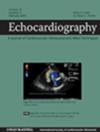Clinical Outcomes of Intracardiac Echocardiography-Guided Radiofrequency Catheter Ablation for Atrial Fibrillation: A Retrospective Study
Abstract
Background
Routine radiofrequency catheter ablation relies on x-ray imaging, which may increase the risk of radiation exposure to patients. With the rapid development of intracardiac echocardiography (ICE) technology, it provides a new guidance modality for radiofrequency catheter ablation and shows great potential for application in the treatment of atrial fibrillation (AF).
Objective
To assess the efficacy and safety of intracardiac echocardiography guided radiofrequency catheter ablation for the treatment of AF.
Methods
A retrospective cohort study was used to collect 184 patients who underwent radiofrequency catheter ablation for the treatment of AF from January 2020 to September 2021 in the cardiovascular medicine department of our hospital. According to whether they used ICE or not, they were divided into the ICE group (30 cases) and the non-ICE group (154 cases). The procedure of the intervention, complications during the intervention and follow-up periods, use of early anticoagulation and antiarrhythmic medications, and the success rate of AF ablation 1 year after the intervention were compared between the two groups.
Results
In comparison to the non-ICE group, the septal puncture time (6.27 ± 1.91 min vs. 7.21 ± 2.08 min, p = 0.022), left atrial modeling time (4.93 ± 1.84 min vs. 5.75 ± 1.96 min, p = 0.035), and total ablation time (67.73 ± 2.64 min vs. 73.35 ± 1.96 min, p < 0.001) in the ICE group were significantly reduced. Radiation exposure time (5.09 ± 0.23 min vs. 13.17 ± 0.28 min, p < 0.001) and radiation exposure (33.13 ± 1.99 mGy/cm2 vs. 217.6 ± 15.17 mGy/cm2, p < 0.001) also were significantly less in the ICE group than in the non-ICE group. The incidence of postintervention nausea and vomiting (3.33% vs. 19.48%, p = 0.032), and hypotension (3.33% vs. 18.83%, p = 0.033) was significantly lower in the ICE group than in the non-ICE group. Furthermore, the proportion using amiodarone in the first 3 months during follow-up was significantly lower for the ICE group than for the non-ICE group (40.00% vs. 63.64%, p = 0.024), and the rate of late recurrence remained unchanged in the ICE group, while there was a trend toward an increase in the rate of late recurrence in the non-ICE group. One year after the operation, the success rates of AF ablation in the ICE group and non-ICE group were 80.00% and 77.92%, and the difference between the groups was not statistically significant (p = 0.825).
Conclusion
ICE-guided radiofrequency catheter ablation is safe and effective in the treatment of AF, and it has potential advantages in terms of ablation time, radiation exposure, complication occurrence, and patient prognosis.


 求助内容:
求助内容: 应助结果提醒方式:
应助结果提醒方式:


